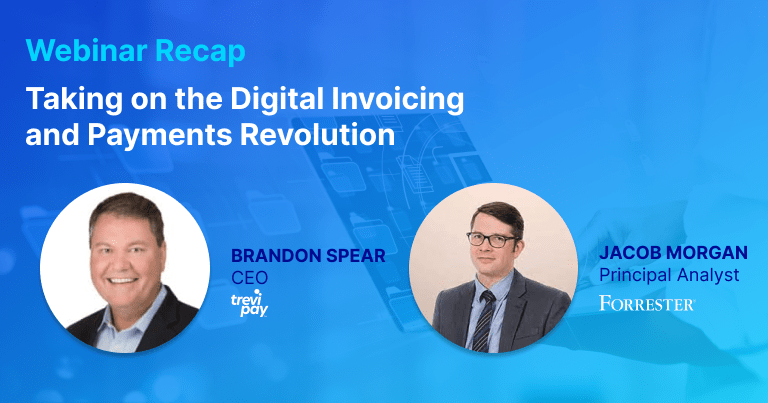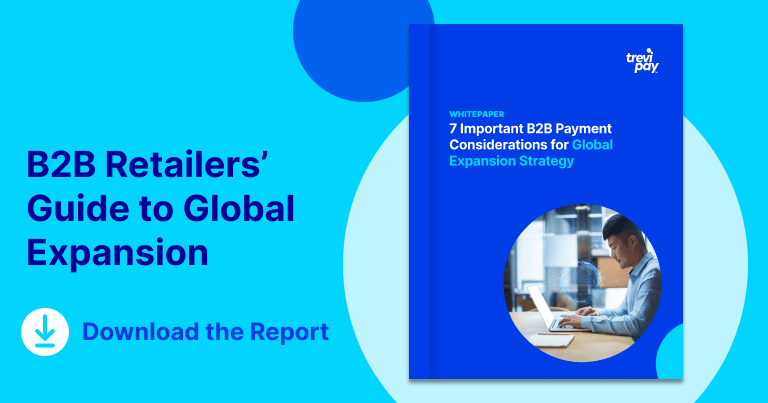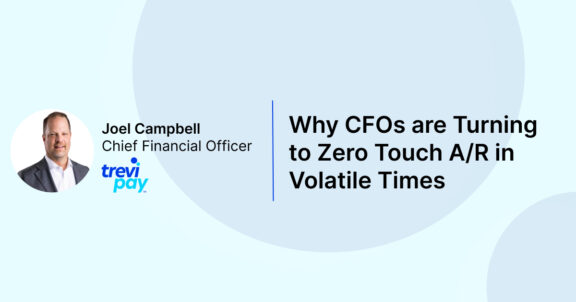For years, B2C solutions have dominated market transformation with innovations such as mobile payments and digital wallets. But now, we’re seeing a shift with B2B taking over with innovation. In “Taking on the Digital Invoicing and Payments Revolution” webinar, Forrester Principal Analyst Jacob Morgan and TreviPay CEO Brandon Spear shared insights into the research behind the future of payments and the business processes that support a successful payments strategy. Here are a few of the highlights.
The B2B Innovation Boom
Jacob Morgan kicked off the webinar by covering how fintechs are resetting the B2B business model and altering the value chain. Businesses are forging direct relationships with platforms and service providers. Platforms are dominating distribution, either in the form of B2B marketplaces or in the distribution of bundled services.
Pulling from his research, Morgan notes how digital payments revolutionized business and we’re now to the point where business is revolutionizing payments.
He underscores the importance of data that provide insights giving companies that invest in AI, algorithms, automation and reconciliation to optimize the payments and financing experience will gain a competitive edge.
However, complexity in B2B will continue to increase. Between M&A activity, the growing number of payment methods, regulation, globalization and increasing competition, businesses that can offer flexibility and choice will see an acceleration in time to value.
Morgan concludes by noting the broader trend is a focus on orchestration services that build value by simplifying access to payments. The needs of businesses move quickly as new models emerge and evolve that require a revolution for payments too.
Business Buyers Also Want What Consumers Enjoy
Following Morgan’s perspective, TreviPay CEO, Brandon Spear provided insight into how the B2B payments revolution has been driven by the desire for business customers to have an experience similar to those of consumers. While B2B transactions are more complex than B2C ones, the premise is the same – people want the same ease and convenience in their personal and business lives. He goes into detail in the webinar on the power of payments from four segments outlined below.
The Complex Nature of Business Payments Networks
- Power of the Network – TreviPay’s robust network connects 85,000 seller entities with 90,000 buyer entities from large enterprises to SMBs on the opposite end of the spectrum encouraging seamless commerce to take place.
- Power of Orchestration – The connection between a supplier’s order-to-cash process and how it integrates with the A/P processes of the buyer.
- Power of Choice – Choice is mandatory to buyers and sellers. For sellers, choice comes in the form of identifying funding sources, risk management, settlement options, dispute resolution, currencies accepted … all with the goal of creating a bridge between how the seller’s order-to-cash process works and how a buyer’s procure-to-pay platform works. For the buyer, choice comes in the form of aggregation of data, purchase controls and invoice delivery, for example.
- Power of Data – As more customers are acquired online, you need to find ways to build and enhance trusted relationships. A true B2B payments partner will offer sophisticated fraud protection, a consistently low rate of false declines, absorption of fraud risk and rich data to identify purchase patterns and spot fraud.
Building Your B2B Payments Strategy
To get the complete picture, access the recording of “Taking on the Digital Invoicing and Payments Revolution.” Forrester Principal Analyst Jacob Morgan and TreviPay CEO share real-world examples that connect digital transformation to the world of B2B payments.






